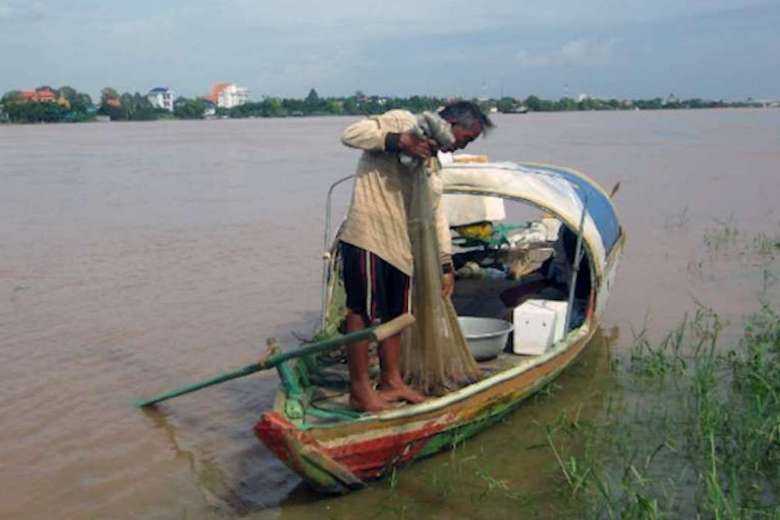
Climate change and dams have resulted in unpredictable wet and dry seasons and upset fish spawning patterns on the Mekong River. (Photo: Ah Ny)
Recorded water levels in the Lower Mekong River Basin (LMB) saw significant increases during the last seven days as a result of heavy rainfall and sudden water releases from dams, the Mekong River Commission (MRC) said on July 29.
But it said river levels across all monitoring stations remain lower than their alarm or danger points with the region experiencing the third year of a drought.
Levels are expected to fall over the next few days, partly due to reduced outflows from construction work at China’s Jinghong Dam.
River levels were above their long-term averages, mostly at the upper stations, according to MRC data. The region has received about 40 percent higher than average rainfall in July compared to the same period between 2015 and 2020, it added.
“Due to heavy rainfall, dams in the Lower Mekong including those on the tributary released large amounts of water during July 24–25, causing water levels to surge quickly,” said Lam Hung Son, head of the MRC Secretariat’s Regional Flood and Drought Management Centre.
He added that it was not immediately clear whether these surges had caused any damage.
We are expecting a drop in river levels immediately downstream of the Jinghong Dam
“Sudden water releases from tributary dams increasingly pose a challenge to accurate forecasting of river levels,” Son said, noting that the MRC has installed 67 automatic hydrometeorological stations along the Mekong mainstream and tributaries to collect rainfall and water level data.
The water level in Thailand’s Chiang Saen, the second uppermost monitoring station in the LMB, increased from 3.10 meters to 6.5 meters from July 20-23.
But the level receded about one meter from July 24-26. Over the course of the next five days, the river level is expected to drop further.
The Luang Prabang station in Laos saw its river level rise from 9.92 meters to 12.28 meters from July 22-26, although the level is forecast to decrease by about 0.35 meters during the next five days.
In Ban Pakhoung station, 5 kilometers downstream of the Xayaburi Dam, the station’s water level rose from 10.19 meters to 14.22 meters from July 22-26. But the river level at this point is expected to drop by about 2 meters over the next five days.
Surges of more than 6 meters were reported at Chiang Khan in Thailand while the Mekong River rose more than 4 meters in Vientiane.
In Cambodia, water levels in the stretches from Stung Treng to Neak Luong in Prey Veng province were reported to have increased by less than a meter but are forecast to rise by 2.6 meters over the next five days, the MRC said.
In Vietnam's Mekong Delta area encompassing Tan Chau and Chau Doc on the Bassac River, water levels were expected to fluctuate as a result of tidal effects.
The MRC said it had been informed by China’s Ministry of Water Resources that outflows from the Jinghong hydropower station in Yunnan province will drop by as much as 50 percent due to power grid construction.
“We are expecting a drop in river levels immediately downstream of the Jinghong Dam,” Son said. “But this will also depend on the amount of rainfall we receive over the coming days.”


